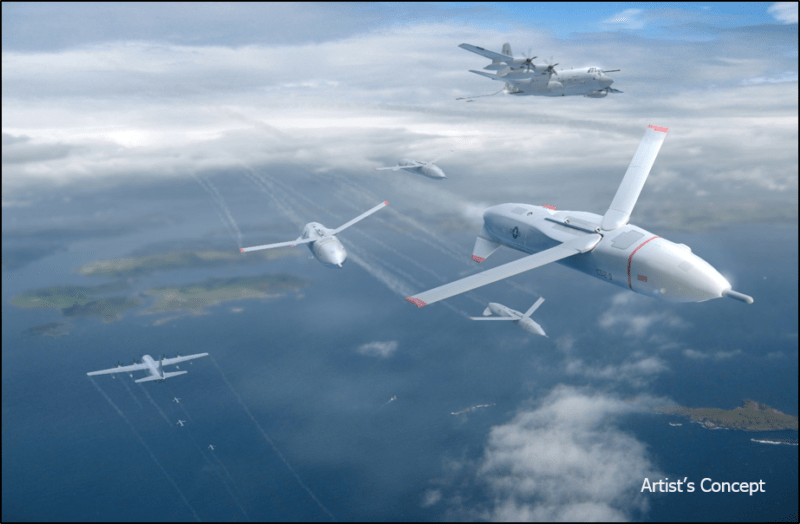
DOD launches swarming drone in test of C-130 “drone mothership” concept

The Defense Advanced Research Projects Agency (DARPA) has been conducting research into a number of types of swarming drones that could be used on the battlefield. The latest of these is the “Gremlins” program—an effort to build relatively low-cost unmanned aircraft that can be launched from a “mothership” transport aircraft and then be recovered by the mothership after their mission is complete.
This past week, the Defense Department conducted the first airborne launch test for the Dynetics X-61A Gremlins Air Vehicle, a jet-powered drone that can be launched from the rotary weapons bays of the B-1 and B-52, from wing pylons, or from a C-130—and then recovered by a C-130 equipped with a docking cable and a crane-like recovery arm.
The first flight of the X-61A took place in November, but the test this week—at the Dugway Proving Ground in Utah—was the first air launch of the drone. While the 101-minute flight was successful, the parachute system intended to allow for a soft ground landing failed, and the drone was destroyed in the unexpected hard landing that followed.
In a phone conference with media, Dynetics Program Manager Tim Keeter said that the test “gives us a lot of confidence going forward that this vehicle can fly where it’s supposed to fly, how it’s supposed to fly.” With that established, Keeter said, “Now the team can be principally focused on the other portion of our program plan, which is to successfully rendezvous with a C-130, dock with our docking system, and safely recover the vehicle.”
The first recovery test will come sometime this spring. By the end of the year, the program aims to launch and recover four Gremlins within 30 minutes.
The Defense Department has previously tested much smaller disposable swarming drones launched from canisters by fighter aircraft. But the Gremlins drones are larger, more capable, and potentially less expensive, as they could fly dozens of missions before requiring maintenance. DARPA is looking at the drones as a potential line-of-sight communications link in environments where radios could be jammed, as well as sensor platforms for surveillance and targeting.




